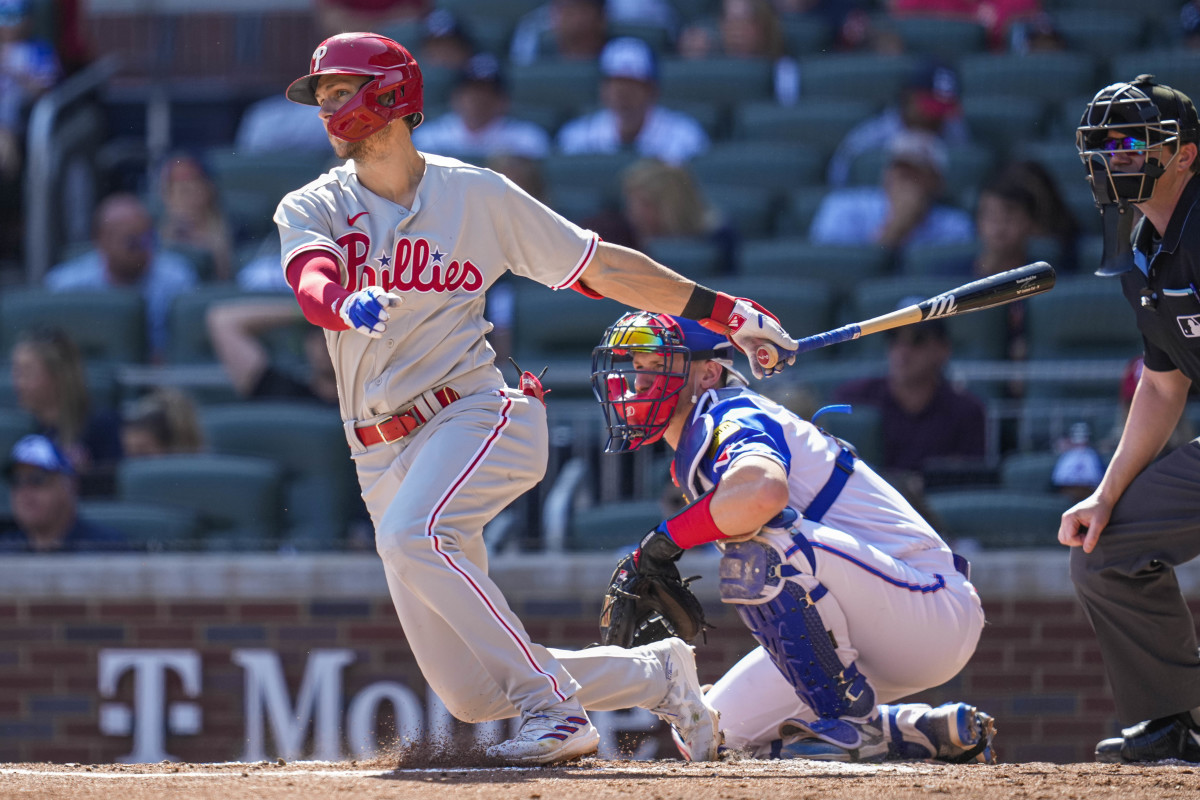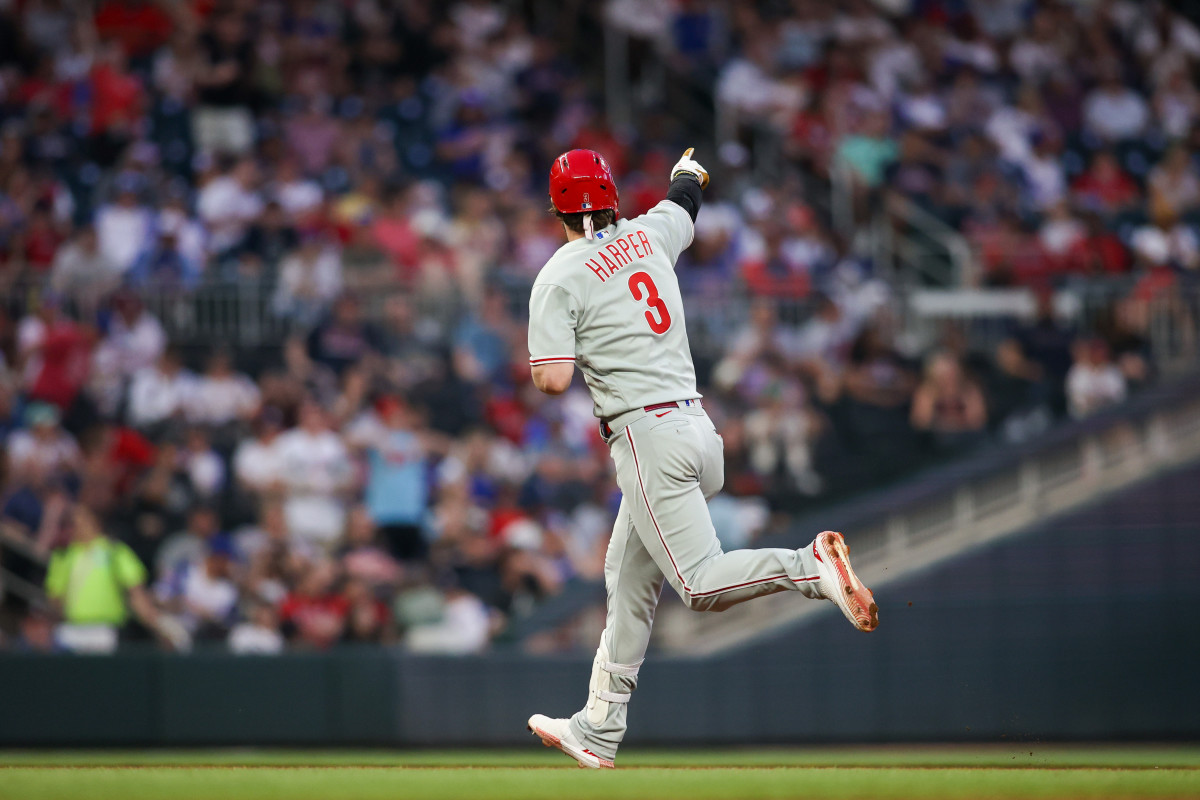What the Phillies Need to Do to Get Past Their World Series Hangover

With one-third of the season over, the entire National League reached Memorial Day still thinking playoffs. Even the worst team, the 23–31 Nationals, are five games out of a wild-card spot. It is a function of both the extra wild card added last season and abject mediocrity.
For inspiration, every middling team can look to the 2022 Phillies—including the ’23 Phillies. Last year’s Phillies are proof that in an expanded playoff world you are never more than two or three hot weeks from the playoffs (and possibly a change of managers).
Those Phillies started out 21–29 before running off a 15–2 streak against six nonplayoff teams. That’s all it took. Outside of those 17 games, Philadelphia was 72–73. It slipped into the playoffs with 87 wins as the third wild-card team, knocked off the Braves and Padres and held a two-games-to-one lead over Houston before losing the World Series.
This season, Philadelphia (25–28) is only one game better after 53 games than it was last year. But manager Rob Thomson, who replaced Joe Girardi to jump-start the Phillies last year, said this year’s team is better positioned to make a playoff run.
“There’s more talent than a year ago,” Thomson says. “Trea [Turner], Taijuan [Walker], [Craig] Kimbrel, [Gregory] Soto ... I just think you look at the roster and you see more talent. We just haven’t been able to put it together in all phases of the game yet. There have been times the hitting has been good, the pitching, the defense, the bullpen, but not at the same time. I know it’s going to come.”
Likewise, Thomson believes the experience of getting to the sixth game of the World Series will serve these Phillies well, as they try to climb out of playing losing baseball for a third of the season.
“There’s no more pressure you’re going to get than playing in a World Series,” he says. “There’s a sense of calm about the club knowing they can handle the pressure.”
There is no soft spot in the June schedule for the Phillies to leverage this year. They are in a 29-game stretch in which they play the Braves and Mets 13 times. They managed to split four games in Atlanta over the weekend.
What must happen for a Philadelphia comeback story again this year? In order, here are their biggest needs.
Watch the Phillies with fuboTV. Start your free trial today.
1. Trea Turner needs to get on base.
The 1–2 spots in the Philadelphia lineup have an on-base percentage of .273, matching the franchise all-time low set in 1968 (the Year of the Pitcher, when Tony Taylor and Cookie Rojas sat atop a lineup that got Gene Mauch fired).

Turner’s story is a familiar one among high-profile players that changed teams: He is pressing to justify the investment in front of a new fan base. Thomson compared Turner’s “breaking in” issues to those of Tino Martinez with the Yankees in April 1996, after his trade from Seattle.
“His at bats have been better of late,” Thomson says.
Turner had been over-rotating with his hands in his load phase, a typical sign of pressing, which caused him to be late on fastballs. He is hitting just .218 against four-seamers and sinkers, the ninth-worst mark among qualified hitters. The worst? Teammate Kyle Schwarber (.157), who has been in a deep funk.
2. Aaron Nola and Taijuan Walker need to miss bats.
With rookie Andrew Painter on the IL and Bailey Falter in the minors, the Philadelphia rotation is thin. Zack Wheeler has been throwing well; even before his eight shutout innings Saturday against the Braves, his peripherals were all fine.
Nola (.722) and Walker (.795) have allowed the highest OPS of their careers while seeing a decline in strikeout rate. But each may be climbing out of their slumps.
“Aaron’s velocity has started to tick up,” Thomson says, while Walker has put together back-to-back solid starts.
3. Bryce Harper needs to play first base.
It should happen around the All-Star Game. Recovering from Tommy John surgery, Harper has been going through defensive drills at first base every other day and slowly increasing his throwing distance.
When Harper can play first, Thomson can rotate players through the DH spot, such as catcher J.T. Realmuto and Schwarber, whose defensive runs saved in left field is the worst of any defender.
Harper is so enthused about playing first base that you shouldn’t be surprised if this short-term solution becomes his long-term home.

4. The hitting with runners in scoring position must improve.
The Phillies are hitting .231 with runners in scoring position. That’s so dreadfully low as to suggest an improvement to the mean. It’s the second-worst mark for the franchise in the past 50 years and down from .270 last year. Philadelphia has hit the fewest homers in those spots (eight) and slugged worse with RISP than every team but Kansas City.
5. Nick Castellanos must establish protection behind Harper.
Castellanos has been much improved in his second season with Philadelphia (.300/.348/469). Hitting behind Harper, he has been occupying the key spot in the Phillies’ lineup.
Braves manager Brian Snitker took Harper off the playing board in the weekend series. His pitchers threw 54% of their pitches to him out of the zone, including 59% with runners on. Harper saw only three fastballs in the zone with runners on across four games.
This season, Harper sees only 37% fastballs, a career low and down from 51% just four years ago.
Teams pitch around Harper because (1) he’s a deadly fastball hitter, and (2) they know Castellanos likes to swing early and often, which makes him vulnerable to chase. His two worst chase rates have come since joining the Phillies last year (40% and 39%). Breaking balls out of the zone continue to be his downfall. This year he is hitting .413 against four-seamers and sinkers but .235 against everything else.
Thomson is right about Philadelphia’s depth: This is too talented of a team not to go on another run, as in 2022. Catching the Braves after spotting them a seven-game lead is likely too big of an ask. But as last season taught us, in a wide-open NL, the Phillies, as disappointing as they have been, are again just a good three-week run away from going back to the postseason.
